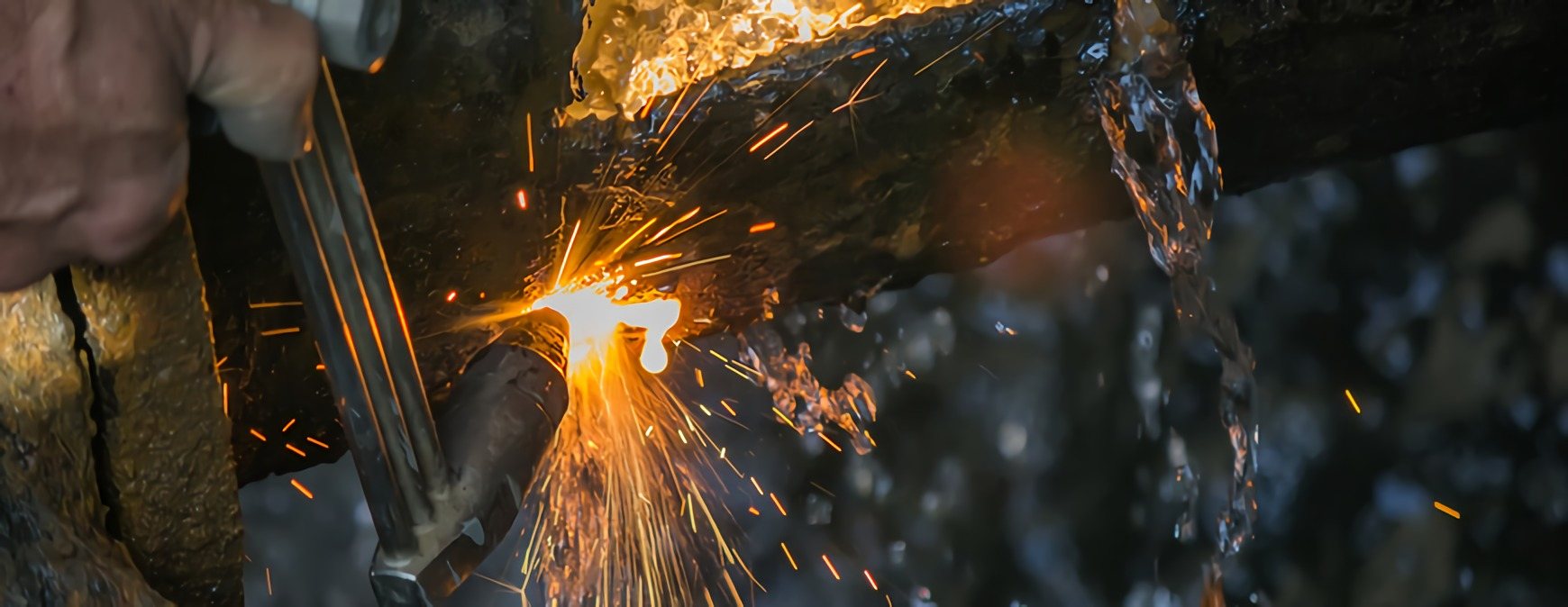TWS is a Great Training Option for Everyone
Learn more about how we can prepare you to advance your career.
You know those awesome sparks and you see in basically every welding picture and video ever?
This process is more than just a flashy display of skill and equipment. It has an actual name: oxy-fuel cutting. It has widespread applications in the field and on construction sites.[1]
But how does it happen? How can you get those same sparks to fly when you weld?
What Are Oxy-Fuel Processes?
All oxy-fuel processes rely on the burning of a mixture of pure oxygen and fuel gas to produce a flame that is high in temperature and heat. Here are the common types of oxy-fuel cutting processes:
Have You Considered a Career in the Skilled Trades?
Fill out the form to recieve a no obligation info packet.
- Brazing
- Welding
- Heating
- Cutting
- Hard surfacing
All of these processes also utilize the same equipment:
- Tips,
- Torches
- Pressurized cylinders for the oxygen and fuel gas
- Hoses and hose fittings
- Safety valves
How Does Oxy-Fuel Cutting Work?
The chemical reaction between the base metal and the oxygen at a high temperature causes the rapid oxidation—or burning—necessary to sever the metal, usually steel.[2]
The welder preheats the metal with the oxygen-fuel gas mixture to its ignition temperature, which is the lowest temperature required for a combustible substance to ignite when heated.[3] At this stage, the metal is not yet heated to its melting point.
The welder then shoots pure oxygen at the preheated area, causes an exothermic chemical reaction. Essentially, the metal releases heat.
A layer of slag forms. Slag is a nonmetallic byproduct of separating metal from its ore.[4][5] Once the stream of oxygen blows away the slag, it punctures the metal, and the cutting begins.
Welders have 26 fuel gases to choose from, but acetylene, propylene, propane and natural gas are used most frequently for cutting.[6]. The various fuel gases impact preheating time, cut quality, and metal thickness differently.
Which fuel gas is most appropriate for a certain job depends on a variety of factors:
- Cost
- Oxygen consumption
- Cutting application
- Heat output
What Are the Advantages of Oxy-Fuel Cutting?
Oxy-fuel cutting is one of the most commonly used processes in welding, and for good reason.
- The initial cost of purchasing the equipment is less expensive than for other processes like plasma cutting.
- The equipment can be used for a wide range of processes, not just cutting.
- It is quick and easy to set up.
- Welders can employ oxy-fuel cutting for metals as thin as 1 mm and as thick as 1000mm.
- While not practical for stainless steel or aluminum, oxy-fuel cutting is a good process for mild and low alloy steels.
- The equipment is easy to transport from worksite to worksite and is well suited for both mechanized and manual operations.[7]
What Is Oxy-Fuel Cutting Used For?
Oxy-fuel cutting is often used in the preparation of plate edges for groove and bevel welding. It can even be employed to cut scaled or rusty plates. [8]
This process is also great for these applications[9]:
- Manual rough severing
- Automated precision contour cutting
- Scrap cutting
Once a welder has the equipment for oxy-fuel cutting, he or she can use it for other processes[10]:
- Flame hardening
- Cutting and bending
- Soldering or brazing
- Metalizing
- Fusion welding
- Stress relieving.
Oxy-fuel cutting is an excellent solution for construction sites and field repair work because of its low cost and diverse application on metal of varying degrees of thickness. Of course, getting to show off flying sparks while you work is a nice bonus.
Want to learn more about oxy-fuel cutting and its role in welding? Check out how it works with a welding pressure regulator.
[1] https://www.millerwelds.com/resources/article-library/choosing-between-oxy-fuel-and-plasma-cutting-systems
[2] http://www.thefabricator.com/article/oxyfuelcutting/choosing-a-gas-for-oxyfuel-cutting
[3] https://www.merriam-webster.com/dictionary/ignition%20temperature
[4] http://www.dictionary.com/browse/slag
[5] Title: Welding Principles and Applications; Author: Larry Jeffus; Delmar Cengage Learning; Seventh Edition; Textbook page 913
[6] Title: Welding Principles and Applications; Author: Larry Jeffus; Delmar Cengage Learning; Seventh Edition; Textbook page 756-757
[7] http://www.twi-global.com/technical-knowledge/job-knowledge/cutting-processes-application-of-oxyfuel-cutting-050/
[8] http://www.praxair.com/industries/welding-and-metal-fabrication/cutting-processes
[9] http://www.twi-global.com/technical-knowledge/job-knowledge/cutting-processes-application-of-oxyfuel-cutting-050/
[10]https://www.cedengineering.com/userfiles/Fundamentals%20of%20Gas%20Welding%20and%20Cutting.pdf
This blog has been labeled as archived as it may no longer contain the most up-to-date data. For a list of all current blog posts, please visit our blog homepage at https://www.tws.edu/blog/







